Author: CaptainNemo
Hello everyone, today, we are going to try something new. We have an article here from CaptainNemo about USS Alaska. Now, I am not into ships that much, but I think it’s really cool and I am looking forward to trying World of Warships, so – why the hell not. Enjoy!
USS Alaska Series: Background and Design
Before we begin, further articles will cover: “The Guns”, “Operational History” and “Comparison between other similar ships of the time.” And in the guns and comparison section I hope to discuss more of World of Warships. ~ CaptianNemo
The Alaska class of “Large Cruisers” was originally conceived back in 1938 when the Bureau of Construction and Repair (BuC&R) conducted a comprehensive study of cruiser designs was conducted ranging from 6,000 ton to 38,000 ton cruisers. The Alaska Class would come to be termed as “cruiser-killers” by the Navy. As “cruiser-killers”, the Alaska Class was also designed protect carrier task groups (TG) and to operate independently and alone against enemy surface forces, namely they were designed to counter the threat of German and Japanese long range cruiser forces in both of these roles, that were built, were being built, or planned to be built and armed with 8 inch (203mm) guns which were the maximum allowed on Heavy Cruisers by the London Naval Treaty of 1930.
President Franklin Delano Roosevelt (F.D.R.) himself influenced the creation and development of the Alaska Class which he felt was needed to counter the threat of German cruisers. F.D.R. had been previously the Assistant Secretary of the Navy between 1913-1920 and put his experience in that position from seeing political roadblocks on shipbuilding, political infighting and bureaucratic nonsense to streamline (speed up) the Navy’s procurement of new ships by, at times, acting as the “de facto” Secretary of the Navy or by personally getting involved with the design process and specification of new ship designs during his presidency. To cite the more extreme examples (Iowa Class) of involvement F.D.R. went to outside designers (BuC&R typically did all of the design work in-house) to draw up ship plans and then issued requests for such a ship with specifications that matched his personal designs. To help cover his tracks he had plans drawn up of ships not matching his specifications so that his design would be chosen after a careful review of the designs presented to the Navy. (Guns will be covered in another article)
To do this the Alaska Class were given the ability to cruise up to 10,000 nautical miles at a speed of 15 knots @ Standard Displacement, and at Full Load, this cut 1 knot off their speed to obtain the same, 10,000nm, range. Engine efficiency for the Alaska Class was the result of nearly 10 years of steady development in metallurgy and naval designing. The Alaska Class used higher pressures, up to 634 psi, then previous designs which had been limited to 400 psi and 700° F in Mahan Class destroyers in 1933 due to concerns by engineers and by captains with increasing the operating temperatures and pressures. The Mahan Class were also the first to have reliable double-reduction gears on the steam turbines which helped to improve efficiency and reduce the overall total weight of the machinery needed to propel the ship to a given speed. The Navy standard, ~1935-36, by the time the Alaska Class was designed was 600 psi at 850° F with the boilers being capable of producing 634 psi and over speeding the turbines to produce 180,000 horsepower (versus a normal 150,000 horsepower) although damage would occur to the turbines if this was done for an extended length of time. As a result of this horsepower the Alaska Class could do 31-33 kts and when overloading the turbines do 35 kts for short periods. A common complaint was that the Class did not have the maximum amount of power (speed) then available as the ships could have been equipped with the same engineering setup as the Battleships and had 200,000 horsepower on tap all the time. This would have allowed the Alaska Class the ability to chase down nearly any other ship but at the time the Class, as designed, was to be used against ships that were believed to be slower than the Alaska’s so the additional weight in machinery was not considered to be sufficiently needed nor the additional cost expended when the designers were already trimming weight where they could without extremely sacrificing the protection of the ship.
The armor for the Alaska Class is a compromise from several early design studies for a “Large Cruiser” showcasing the overall design of the ship and several variations of that design which shifted arms and armor and speed around into several designs. The final design chosen was to protect the ship from 8 inch guns fired from Heavy Cruisers and use the 12 inch (305mm) guns longer effective range to take the Heavy Cruisers out. Armor on the Alaska class was 9 inches thick tapering at the bottom to 5 inches thick (228.6 down to 127mm), inclined at 10°, and covered more of the waterline then was typical for a standard cruiser. The area protected by armor was designated as an percentage (%) base of the length of the waterline, which was standard practice during and before WW1. Deck armor varied as well and could be 1-3 inches thick (16mm to 76mm) depending upon the deck with the conning tower being armored as well 10.6 inches sides (269mm) and 5 inches (127mm) on the roof.
The Alaska Class were designed to resist a 700lb TNT* warhead from a torpedo although variations of early designs were designed with resistance to a 500lb charge of TNT which was considered the minimum charge a capital ship should be designed to resist for and this was done as a proposed way to reduce the weight of the ship. At the time of the design it was not known that the Japanese Type-93 “Long Lance” Torpedo carried a 480 kg (1,100lb of Type 97 explosive**) warhead. The torpedo itself would not be noticed until intact examples would be found in 1943 and the full realization of the threat it posed noticed. Effectively the Alaska’s underwater defense was better than the standard Cruiser due to increased stiffening longitudinally and increased coverage of the main armor over a larger part of the ship but noticeably worse than that of a Battleship and the design for the Alaska did included a double bottom which was improved by careful design to give the ship similar protection to that of a previous sketch which had included a triple bottom. The end result was a double bottom design that was reinforced by the ammunition magazines. This produced a much stronger double bottom design then a standard double bottom hull without the increased weight or strength of a triple bottom design and was one of many such compromises to go into the ship.
*All information I found was counter to William Garzke who said TNT (which I used here) which is interesting since many navy’s were using Torpex (US and UK Torpedoes) which is a much more powerful explosive per pound. Torpex is a secondary explosive 50% more powerful than TNT by mass. Torpex is composed of 42% RDX, 40% TNT and 18% powdered aluminum.
** Type 97 Explosive: The standard explosive charge was 60% TNT and 40% hexanitrodiphenylamine in blocks. This had first been developed by the Germans in 1907 and was very resistant to shock. This explosive was classified as Type 97 by the Japanese and was about 7% more powerful than 100% TNT.
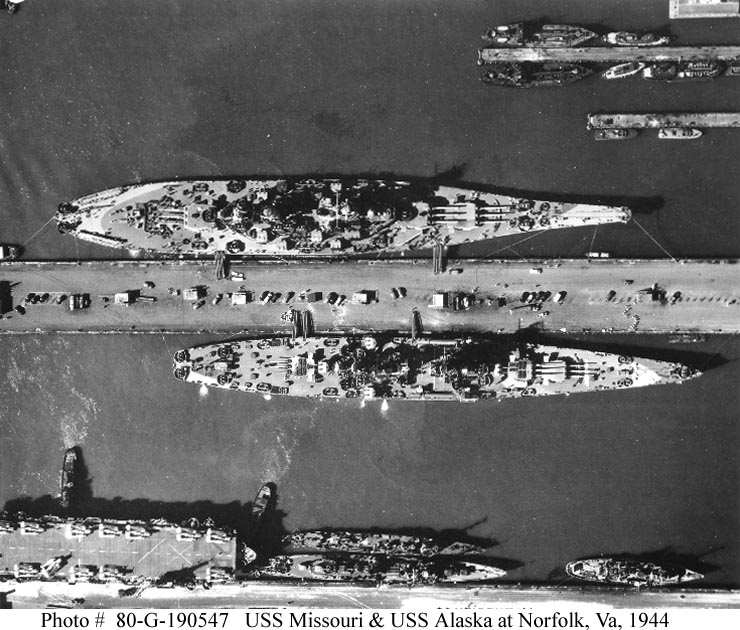
Also coming from Cruiser design, to the Alaska, was the implementation of a single rudder in the middle of the stern compared to the more usual design at the time of implementing a twin-rudder design for Battleships. As a result the operational tactical diameter of the Alaska Class was 870 yards and the Iowa Class Battleship with their twin-rudders could out turn, I.E. turn inside, the Alaska Class. That being said they were designed with much better damage control, compared to Cruisers, in that there was more subdivision in their construction to limit flooding of compartments and to limit damage from underwater explosions. From cruisers there was the general subdivision of the Alternating-Current (AC) electrical generating plants into four separate rooms, two rooms were for diesel generators and two for electrical generation by steam. Each plant could be sealed off from the others and independently provide almost 25% of the ships electrical power on its own.
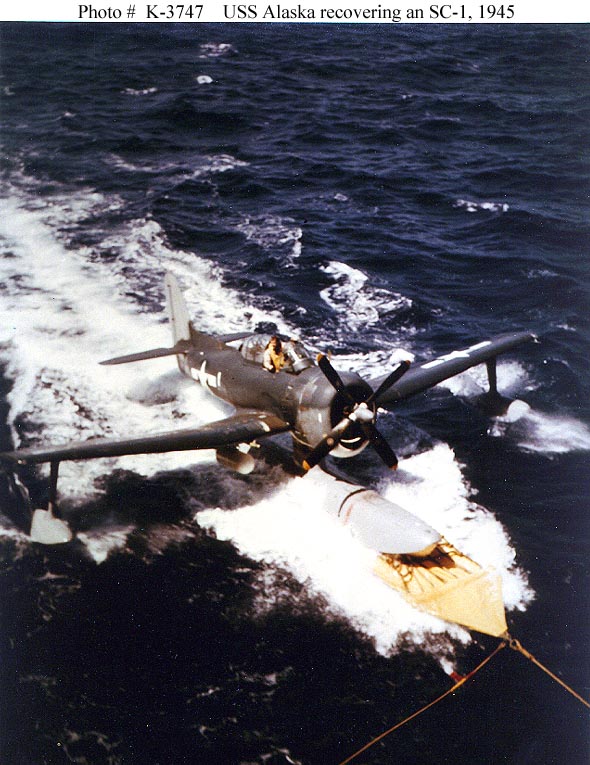
One of two optional sea planes for this ship, (Historically) the other is the earlier and more common Vought OS2U Kingfisher(Below). Although most photos showing the Alaska Class show the Curtiss SC Seahawk since the Kingfisher was being phased out and scrapped before the war was over even though it was a capable aircraft. Being a new ship the Alaska Class was equipped with the best the Navy could give it. (More details in operational history article)

The Short List
Less than a Battleship
-Less protection against shell falling short and passing through the water and impacting and piercing the hull below the main armor belt.
-Less Torpedo protection since there is less dispersion of the impact and explosion.
-Less Maneuverability due to a single rudder
Not a Battlecruiser. Why?
-Not fast enough to chase down a Battleship moving at its Full Speed
-Not enough armaments to take on a Battleship
-Battleship can hit it and “effectively” kill it before it can hit the Battleship
More than your Standard Cruiser
-Main armor extends over a much greater number of decks and over a greater length of the ship between the armored bulkheads.
-Additional longitudinal bulkheads compared to Standard Cruiser to help control damage from flooding (fore-and-aft) as a result of torpedo hits by stiffening the structure of the hull.
-Duplication of director leads (Gun Director)
-Better guns to take on anything the size of a Heavy Cruiser and smaller.
(German Pocket Battleships included)
Specifications
Class: Alaska
Type: CB (CB = Large Cruiser)
Length: 808’6″; (246.43m)
Waterline: 791’6”
Breadth: 91’1″; (27.76m)
Draft: 27’1″ (mean); (8.255m (mean))
Draft: 30’9” @ Normal Load
Draft: 31’9” @ Full Load
Compliment: 2,251; (disagreement in numbers)
73 Officers 1,444 Enlisted
Light Displacement: 25,971
Standard Displacement: 27,000-27,500-29,650 tons; (publications differ)
Normal Displacement: 33,774 tons
Full Load Displacement: 34,253 tons
Fuel: Up to 3,685 tons of Fuel
Up to 342 tons of Diesel Fuel (for generators)
Range (29,650 tons):
10,000nm @ 15kts
5,000nm @ 26kts
3,500nm @ 31kts
Range (33,650 tons):
10,000nm @ 14kts
5,000nm @ 26kts
3,400nm @ 31kts

Armor (This kept it simple)

Armaments
9 x 12″/50 (Mark 8), (In 3 turrets 2 fore and 1 aft)
12 x 5″/38 (Mark 12), (In 6 dual purpose turrets 3 per side)
56 40mm/56., (In 14 quad mounts)
34 20mm/70.;
Aircraft. 4;(maximum)
Two catapults
Speed
260-264 rpm Sustained Speed. 31.4kts
270 rpm Full Speed ~32.5-33.0kts (29,650 tons displacement)
270 rpm Full Speed ~32.1-32.6kts (33,650 tons displacement)
Overload Turbine Speed ~35kts (182,497 horsepower)
158 rpm Full Astern ~19.86kts (Based upon propeller rpms)
(rpm is prop shaft speed)
Electrical and Engineering
Electrical Generation(AC)Total: 8,168 kw 450 volt
Steam: 2x 1,000 kw 450 volt each in each of 2 engine rooms.
Diesel: 2x 1,042 kw 405 volt each in each of 2 generator rooms.
Horsepower 152,080 (182,497 Overload)
4 Shafts 37,000 horsepower each (45k Overloaded)
Pressure: 565psi or 39.72 kg/cm²
(Max 634 psi or 44.57 kg/cm²)
8 Babcock & Wilcox Express boilers (superheated)
Propellers: 14’10” in diameter each (According to William Garzke)
Propellers: 14’4” in diameter each (According to War Service Fuel)
Pitch Inboard: 15’1″
Pitch Outboard: 15’7″
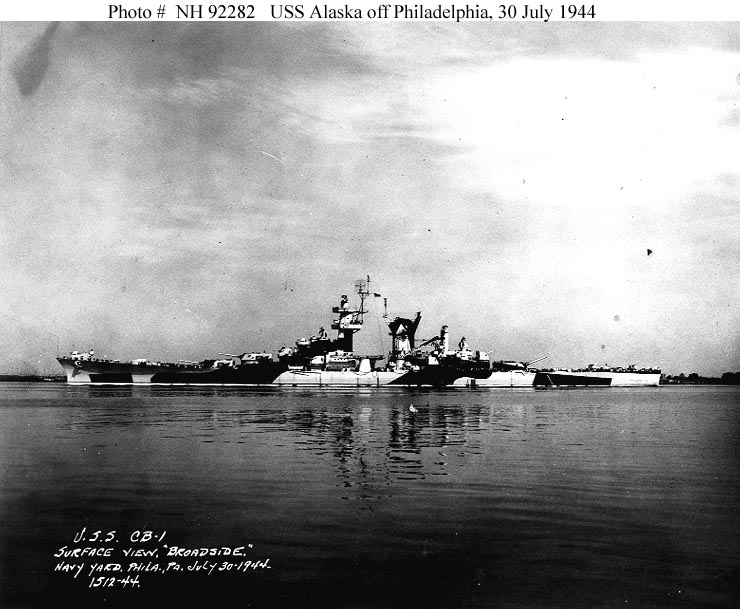
Sources:
War Service Fuel Consumption of U.S. Naval Surface Vessels. 2ed ed. G.P.O., 1947.
**Actual Wartime Figures rather than predictions**
Battleships: United States battleships, 1935-1992 by William H. Garzke and Robert O. Dulin (1995ed)
“Type 93 torpedo – Wikipedia, the free encyclopedia.”
“USN Ship Types–Alaska class (CB-1 through 6).” ibiblio – The Public’s Library and Digital Archive. http://www.ibiblio.org/hyperwar/OnlineLibrary/photos/usnshtp/cru/cb1cl.htm
NavSource Online: Battleship Photo Archive – Vought OS2U Kingfisher


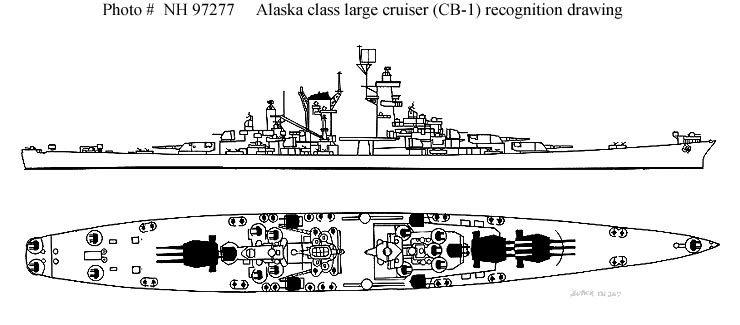
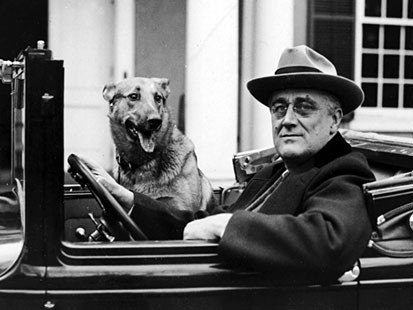
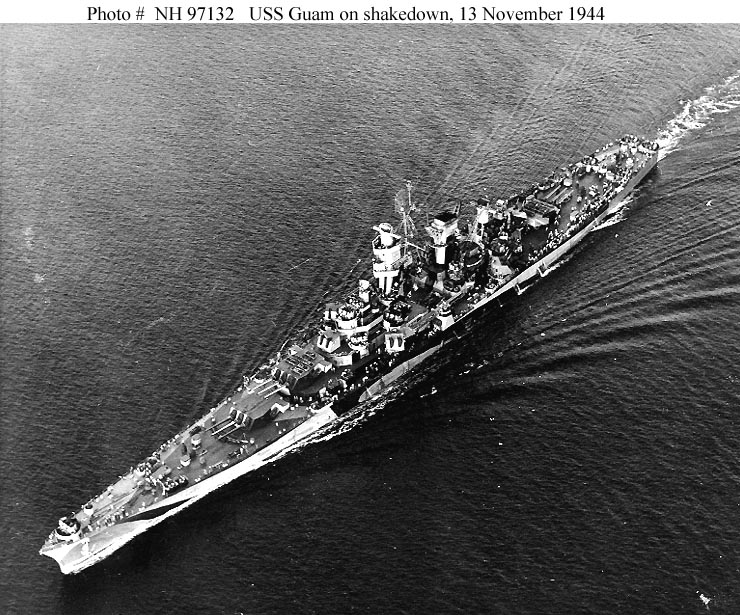
I really hope the Alaska makes it to the game. but how would it be classed? its a bit like the VK 36.01 H: its a medium-heavy hybrid, but more medium than heavy. something like a light battlecruiser of sorts.
The USS Alaska is in the game and is classified as a Fast Battleship in game. Although the last time I looked it did not say what tier it was on.
Some authors classify the Alaska as a “Battlecruiser” but I feel its not a Battlecruiser compared to the Battleship & Battlecruisers of the First World War which were more clearly defined by armor and speed. I really feel that it does not fit the Battlecuriser designation but that’s my opinion.
Its Currently tier 6 in the 2nd Fast BB line (3rd in total)
I know. I went back and checked the wiki and saw that it had been updated. The wiki actually lists it as T5/T6 which there is enough variations of the ship in the design stage that you could have 4 different ships… maybe as many as 6 if you include the Alaska/Carrier hybrid version.
I might have to do an short article on the variations.
NEMO.
Yeah, it’s kinda of in a category of its own, personally I’d go for it being a heavy cruiser, tier 10.
Its currently a tier 6 BB, where it is decently balanced.
The 8″ version might work at tier 10 though.
WoT classes =/= WoWs classes
http://forum.worldofwarships.com/index.php?/topic/3579-ships-tanks/page__p__101963#entry101963
world of warships will be much like world of tanks
pretty same classes
heavy tank – battleships
medium tanks – crusiers
light tank – frigates and destroyers
arty – carriers
i will be playing it
but world of warplanes will be a big flop
There is Fast and Slow Battleships (Different lines). Cruisers (although I am not sure if they are subdivided I forgot to check) Destroyers and Carriers (With carriers I am not sure if its just one class. There is a lot of Q&A I still need to dig through)
Such a Q&A summary would make for a great article.
The Q&A is on the wiki separated under different sections.
http://wiredstar.com/WoWsWiki/
Subsections include many things.
Here’s the answer on the wiki page.
http://wiredstar.com/WoWsWiki/
Destroyers (DD and DE)
Cruisers
-Light Cruisers (CL)
-Heavy Cruisers (CA)
-Large Cruisers (CB)
-Battlecruisers (CC)
Battleships (BB)
-Slow Battleship
-Fast Battleship
Aircraft Carriers
-Escort Aircraft Carriers (CVE)
-Heavy Aircraft Carriers (CV)
-Light Aircraft Carriers (CVL)
Slight correction it seems they consider the Alaska to be a “Battlecruiser” in game yet also put it under Fast Battleship as well. A little confusing but hopefully more info will come out as it gets closer to Beta.
That’s just overall ship classifications. The game itself doesn’t necessarily use those designations for lines.
I have a separate Battlecruiser page just because they’re really different from Cruisers and Battleships, and I wanted to have a dedicated page for folks to see information on them.
WoWs currently classifies ALL battlecruisers as battleships – they will be in battleship lines and show as battleships in the game.
Ahh. Thank you for the clarification.
I am currently digging though the pages… =)
NEMO.
No worries! I’m glad that people are deriving good information and value from the Wiki. It’s a lot of work. :)
I actually didn’t use the wiki for any of this article. But I would like to showcase the WoWs more since its coming in a short time. Beta at least.
What is the point of DE and DD in a game without submarines?
Destroyers have Torpedoes(high damage). They are also, but not always, faster then a Battleship or even a Cruiser. If its like tanks then they should be able to run “Flat Out” 24/7. Which means they should be able to hit 35+ knots and reach those speeds very quickly from a dead stop. On top of this a Destroyer should have the smallest turning circle at speed of any ship.
NEMO.
I’d guess being quite small compared to virtually everything else afloat ought to make them difficult to hit, too. Another thing that AFAIK made the functionally unarmoured “tin cans” surprisingly resilient at times was that the usual SAPHE shells generally didn’t get enough resistance for the impact fuze to go off and thus just punched a hole right through the hull…
Nah man, WoWp is a good game, there is alot of polishing to be done but the core game play is good and addicting. The real thing about WoWp is that it needs to be learned more than WoT. You actually need to know the basics of aircraft combat to play, otherwise you’ll be dead in seconds.
I’m looking forward to WoWs Beta, it’s really exciting to see the depth of Naval Combat.
“WoWp is a good game”
lol lol lol lol lol lol lol lol
like health bars, they were in aircombat right? no? oh, wait… so then war thunder gets it right, but wowp not. So you are wrong.
Strange I never hear anyone complain about health bars for their tanks in WoT.
Remind me then, did tanks have health bars? Now if you can’t distinguish between a game mechanic and real life, that is your problem. The developers of WoWp chose to go down the HP road, and we’re fine with it. That doesn’t mean you can’t destroy a plane by a critical hit (destroying wing or tail, hitting the pilot), that happens here too.
And also, no right and wrong. He and I enjoy WoWp and think it is a really good game, you enjoy WT. The difference between you and me is that I don’t come on a WT related blog and start bashing the project. And yeah, I know FTR isn’t about WoWp, but it appears from time to time and is closely related to WoT.
Wowowowowo…its just a GAME. WoT also has health bars, but tank tactics that worked in real life like angling your tank work in WoT aswell. See where im going?
FLOP.
I tried the Beta of WOWP, I found it was too arcadey for a flight sim and too much flight sim for an arcade game. Not really sure which market it was targeting but it was hitting neither.
Well for me it hit it. I don’t want to feel like I’m flying a starship/UFO or god knows what but at the same time don’t have the time and commitment to play an actual flight sim.
I know the combination is a bit strange at times, but it really grows on you. Also of note I’ve been playing since Alpha and have loved the game since day one. And you don’t want to know the things we had in Alpha:))
More like
Battleship=Arty
Cruisers=Arty
Destroyers=Arty
Aircraft Carriers= click and command
Please don’t compare ships to tanks.
They will have direct fire mode to about 10,000 meters from what I read on the wiki and then Arty mode beyond that effective range. I’ll track it down and add it to the article on Guns.
NEMO.
WoT classes =/= WoWs classes
http://forum.worldofwarships.com/index.php?/topic/3579-ships-tanks/page__p__101963#entry101963
It will be a while before we will see it in game, as its in the 3rd BB line.
We haven’t even gotten to 3rd lines in WoT yet, and ships take even longer to model.
The “Super Alaska” is going to be in at release. So I suspect that the normal Alaska will show up too.
Super Alaska is 12 x 12″/50 (Mark 8), (In 4 turrets 2 fore and 2 aft) with about 12 inches instead of 9 inches of armor. Speed is slightly slower then Alaska iirc. (will need to check to be sure since there is many variations)
I know i’m the guy who runs the “What we know about ships” Thread.
thx for article dude. i study battle ships from my time playing supreme ruler (i rec).
i just hope the guys that develop WoWs are not the same developers that develop WoT.
No problem.
They are different developers. It will be interesting to see how the struggle to fit different ships into different classes. Cant wait for a look at a tech tree. Although I think I understand where they are going with trees now that I have begun to re-read the wiki and read all of the Q&A.
NEMO.
http://imageshack.us/a/img600/8481/ikf.png
This is the US tech tree as we currently know it
It surely will be implemented in WOWS. The build time is right. Its designed enemies, german “pocket battleships” will be in WOWS too. I guess it will be top for american crusier branch.
It was designed to counter them. But it needs more speed to really chase them down. Against pocket battleships its guns and accuracy at range is all it had.
Lol time !
Where are the tracks ??
Useless post, I know…….
Ok, I’m leaving now :-)
(Sorry)
More seriously, wonderful post ! I really like all this historic stuff you bring us !
Thumbs up , guys :-) :-)
Not to be That Guy who nit picks grammar, but the flow of the article would be smoother with fewer conjunctions. The sentences with multiple “and”s or “but” get a little unwieldy.
True. But there was only so many ways to word things. Plus some stuff was added in a day to two after other stuff and I should have cleaned it up more. I actually killed 2 whole sections.
NEMO.
Does angling works for ships? I have a hunch that I’ll see people angling their ships in WoWS..
Depends on what you mean by angling. Given that basically most combat will be god view arty mode the standard tank angling probably won’t factor in all that often (shells come in from heaven). However, what will play an effect very similar is angle of impact which has a lot to do with range. The best thing is obviously the 90 degree from above, but at certain ranges (angles) the shells would just skiff off the deck. If they go the historical route you will have ships that want to maintain certain ranges against their foes, basically maximizing their angles of impact while minimizing their foes. There very much could be ranges where certain ships won’t be able to harm another ship and such.
I think that “angling” works, but only when you are trying to make yourself the smallest target possible. Depends of course on ROF, the in game speed of warships, but knowing WG “arcade” attitude it will be possible to i.e. put a salvo into the opponent and then turn your ship to “face” the enemy cannons, thus making yourself a smaller target.
Or not.
If you go straight towards the enemy guns you can only bring the forward turrets to bear and any shells that hit you will damage the control aspects of the ship, due to the small amount of hull visible.
Then again you have designs like the Richelieu which only had front turrets in the first place. And the frontal profile *is* a far smaller target than the full-monty side view…
Considering the time to impact on shots so can you turn some to be able to bear all turrets and then straighten up again before the enemy shells arrive.
If WoWs turning radii and speeds are *anything* like IRL that’s utopistic at best.
Alpha will start this year.
From Alpha to full release is currently planned to be 11-12 months.
Sorry Capt. Nemo, it is the epitome of a Battlecruiser. Battle cruisers are meant to hunt down cruisers, using battleship weapons to engage them outside of the enemy cruisers effective ranges. They are not designed to fight BB’s. Ask the Brits at Jutland.
Take care
W
Battlecruisers were *also* supposed to be able to “outrun anything they couldn’t outgun” – ie. battleships – and carry firepower equal to their hefiter cousins.
Quick look at the numbers says the Alaska could only match the contemporary “fast battleship” Iowas in sustainable speed (31 knots) and outpace them (by two knots) only with the mechanically unsustainable “dash speed”, while carrying ‘only’ 12-inch guns – while certainly more powerful than the 8-inch jobs US heavy cruisers carried those are still a fair bit short from the 16-inch monsters of the big boys.
By way of comparision the ooooold Lexington-class battlecruisers could apparently comfortably do 33 knots for extended periods if needed and had 16-inch main batteries…
I think your point about the “contemporary” comparisons is very important. If the Alaska class was designed a decade earlier or so, sure, they’d fit right into that BC realm. But it’s hard to make that claim when the USN already saw how ship design had progressed. They wouldn’t try and make a BC to kill ships a decade old.
Alaska is definitely a “strange” ship to class type wise. It doesn’t quite fit the standard definitions. Honestly this article made me realize just how unique this ship was in terms of the standard ship type system.
The loss of British BCs at Jutland was mostly due to the ammo handling arrangements and the fact that British ammo had a tendency to explode (whereas the German ammo was more likely to burn)
This is partly true. Both used different types of explosives and different types of propellent.
On top of this the British had different handling procedures that (inexcusably) allowed extra propellent and shells to be stored “at the ready” in the handling area in order to be able to fire off the guns as fast as possible. (a British trait. It something they had always prided themselves on)
To top of the problems Battlecruisers had less armor and protection of these crucial spaces.
BOOM
End of BC production and pursuit of said design. Thats the short version.
Thats the reality. Its not pretty. War was never meant to be pretty.
NEMO.
I can’t wait for an article about the Yamato Battleship, said to be the most powerfull ever built
Strictly speaking that’d be the Yamato *class*, as two ships therein were finished – the Yamato itself and its sister the Musashi. The third one, Shinano, was converted into a carrier during construction.
The last 2 were uncompleted (5 were planned in total)
Hulls 111 and 167 i believe.
Hull 111 with be in the game as the tier 10 2nd Japanese carrier
Shinano is the tier 9 of that branch.
Should be interesting to see.
Wait, WWII ships armed with catapults?
Sure, they lobbed the kitchen waste at the enemy with those. >_>
Yes. Even the Iowa was armed with Catapults and the Seaplanes they fired off were really used.
I prefer a trebuchet myself… But we cant have it all.
Back in the beta of WoT me and my friends were saying how cool a battleship version would be, so to say I’m excited about WoWs is an understatement. I just wish they had developed WoWs first before the garbage WoWP.
Don’t we all…
NEMO.